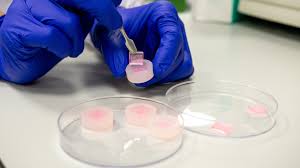
Breaking News
 Year-Over-Year Existing Home Sales Disappoint In November, Decline Most In 6 Months
Year-Over-Year Existing Home Sales Disappoint In November, Decline Most In 6 Months
 Loss Of Credibility: Yen Craters, Yields Surge After BOJ Hikes Rates To Highest Since 1999
Loss Of Credibility: Yen Craters, Yields Surge After BOJ Hikes Rates To Highest Since 1999
 DOJ Releases Epstein Files, And [REDACTED]
DOJ Releases Epstein Files, And [REDACTED]
 Putin Identifies The Main Issue Which Will Settle Ukraine War In Year-End Q&A
Putin Identifies The Main Issue Which Will Settle Ukraine War In Year-End Q&A
Top Tech News
 This tiny dev board is packed with features for ambitious makers
This tiny dev board is packed with features for ambitious makers
 Scientists Discover Gel to Regrow Tooth Enamel
Scientists Discover Gel to Regrow Tooth Enamel
 Vitamin C and Dandelion Root Killing Cancer Cells -- as Former CDC Director Calls for COVID-19...
Vitamin C and Dandelion Root Killing Cancer Cells -- as Former CDC Director Calls for COVID-19...
 Galactic Brain: US firm plans space-based data centers, power grid to challenge China
Galactic Brain: US firm plans space-based data centers, power grid to challenge China
 A microbial cleanup for glyphosate just earned a patent. Here's why that matters
A microbial cleanup for glyphosate just earned a patent. Here's why that matters
 Japan Breaks Internet Speed Record with 5 Million Times Faster Data Transfer
Japan Breaks Internet Speed Record with 5 Million Times Faster Data Transfer
 Advanced Propulsion Resources Part 1 of 2
Advanced Propulsion Resources Part 1 of 2
 PulsarFusion a forward-thinking UK aerospace company, is pushing the boundaries of space travel...
PulsarFusion a forward-thinking UK aerospace company, is pushing the boundaries of space travel...
 Dinky little laser box throws big-screen entertainment from inches away
Dinky little laser box throws big-screen entertainment from inches away
 'World's first' sodium-ion flashlight shines bright even at -40 ºF
'World's first' sodium-ion flashlight shines bright even at -40 ºF
Microneedles extract harmful cells, deliver drugs into chronic wounds

These approaches, published in two papers that appeared in the journals Biomaterials and Advanced Functional Materials last July, could drastically improve the quality of life for people with diabetes who suffer from some of the worst complications this condition brings on – and prevent expensive, life-altering amputations.
The challenge with diabetic wounds is that they're affected by persistent inflammation, and they don't heal because the critical proteins that aid in recovery – known as growth factors – are broken down by enzymes called proteases.
NUS assistant professor Andy Tay stumbled upon microneedles as a way to tackle these when he faced a skin issue of his own. "I first heard of it when I had pimples and went to buy a 'microneedle' patch from Sephora," he explained in a LinkedIn post. "My pimples went away and I wanted to explore using microneedles for skin related conditions."
Tay and his team looked to microneedles for drug delivery into chronic wounds, as well as for extracting harmful cells from those sites. Tay noted that this approach is "minimally invasive, can be fabricated with precision, and allows for the active compounds to be painlessly administered directly into wounds. Microneedle patches are excellent materials for wound healing."
A more effective drug delivery system
In the first approach, the researchers developed sucralfate microneedles, housed in a sponge-like biodegradable polymer called poly lactic-co-glycolic acid (PLGA), using coin-sized molds. The idea was to deliver a protein called interleukin-4 (IL-4) to stimulate the production of growth factors and promote tissue regeneration in diabetic wounds. Meanwhile, the sucralfate medication would protect these growth factors from degrading in the wound.
The microneedles deliver these compounds directly into the wound and safely dissolve there. This method not only sped up wound healing to twice what you'd see with conventional treatments, but also reduced systemic side effects, and avoided damage to newly formed tissues caused by traditional adhesive dressing.
Extracting inflammatory compounds
The second approach involved getting those nasty inflammatory compounds called chemokines out of the wound. The team went with heparin-coated porous microneedles, because heparin (an anticoagulant medication) binds readily to chemokines. This method showed a 50% reduction in tissue inflammation, and shrunk the wound down to a tenth of its size in just two weeks.
Armed with these two complementary technologies, the researchers now plan to explore how they can use 3D printing to fabricate microneedles with different pore sizes, and add antibacterial properties to prevent infections.



